Daniel Libeskind's 2001 Serpentine Gallery Pavilion was folded "like a piece of origami"
Movie: next in our exclusive video series with Julia Peyton-Jones, the Serpentine Gallery director discusses Daniel Libeskind's angular metal pavilion from 2001, which she likens to a folded paper sculpture.
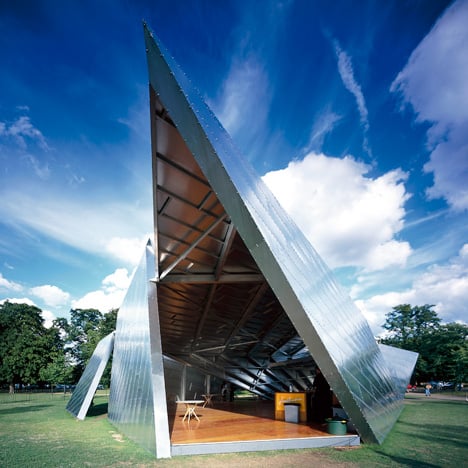
Polish-American architect Libeskind designed the second Serpentine Gallery pavilion in 2001. Called Eighteen Turns, the structure was made from sheets of aluminium, riveted together to create a continuous form that seemingly folded over itself.
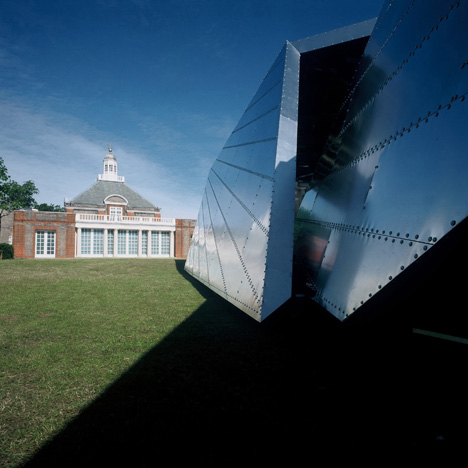
"It was like a piece of origami," Peyton-Jones says in the movie. "The design was very clear, very simple, but in its own way very complicated. Eighteen Turns was a brilliant description of what it was."
She adds: "All the rivets that kept it together were of a sort of regimented exactness. It was a beauty that I cannot describe."
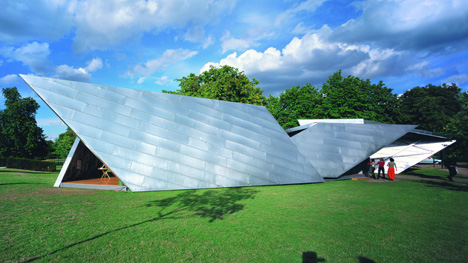
Libeskind worked with engineering firm Arup to create the pavilion. The structure was designed and constructed within three months – half the time that architects of subsequent pavilions have had to work with.
"Unfortunately Daniel Libeskind got even less time than anybody else has had since then," Peyton-Jones says. "But he and Arup were fabulous to work with and they took the Serpentine ethos completely to heart. They were immensely generous and they designed something that was really extraordinary."
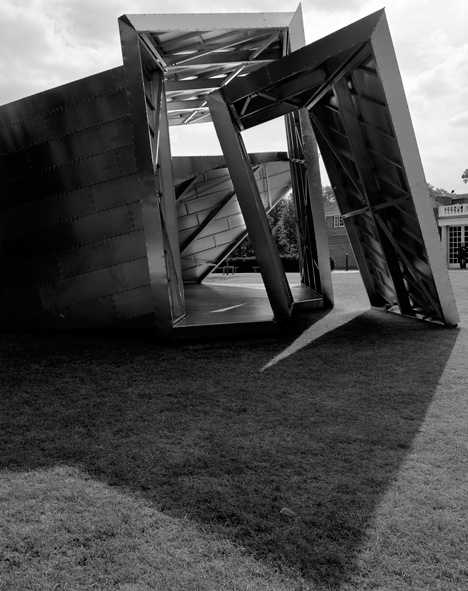
It took less than 20 days to erect the pavilion. It was designed to be flat-packed so it could be easily reconstructed on other sites. This became an important part of the brief for subsequent pavilions, which the gallery tries to sell each year to raise funds.
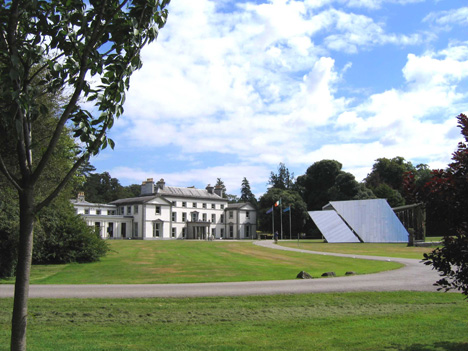
Libeskind's pavilion was bought by property developer Cite. In 2005 it was re-erected at Fota House in Cork, Ireland, during the city's tenure as European Capital of Culture.
Subscribe to Dezeen's YouTube channel for the latest architecture and design movies
"It set a seed for this idea of how you can pick things up and transport them," Peyton Jones says. "This idea about the ongoing life of the pavilions was very, very important."

This movie was filmed by Dezeen at the Serpentine Gallery in London. All photography is courtesy of Serpentine Galleries, unless otherwise stated.
Dezeen will be looking back at each of the pavilions from 2000 to 2015 in subsequent movies over the following weeks. You can watch all the movies as we publish them on our YouTube playlist: